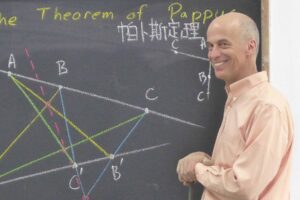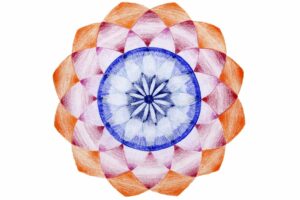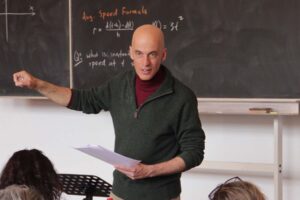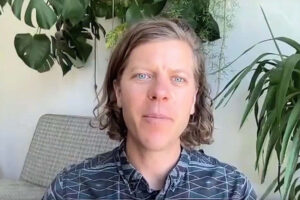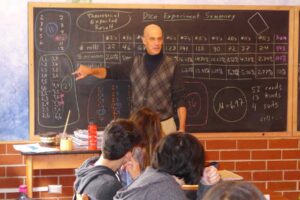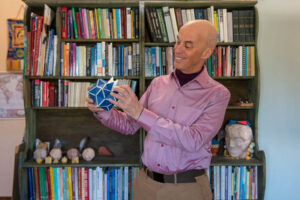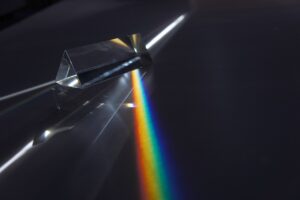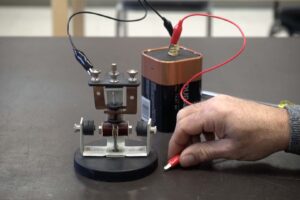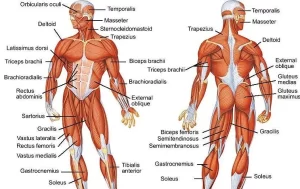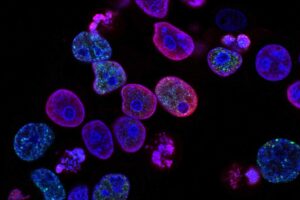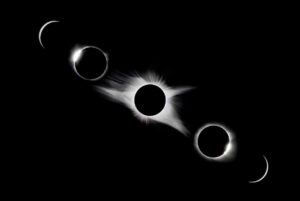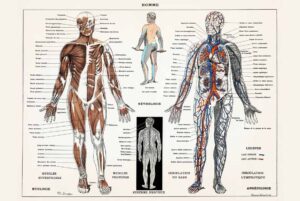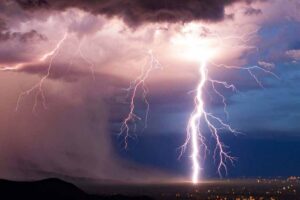Science Academy Offerings
Grade 5: Botany | Grade 6: Physics, Geology, and Astronomy | Grade 7: Chemistry and Physics | Grade 8: Chemistry, Physics, and Anatomy | High School: Physics, Chemistry, Astronomy
Following the fourth grade study of the animal kingdom, the fifth grader now takes up the study of the plant kingdom, or botany. Students combine personal observations and teacher-led information to delve into the relationship of the human person to the plant world.
As the sixth grader’s body begins to sink closer to the Earth, emotionally and physically, a study of the Earth and its features helps to ground them in understanding better this floating rock they live upon.
6th Graders will to look up and out, contrasting and balancing their developmental growth towards the Earth. In this block we will once again combine both personal observation and scientific data to familiarize ourselves with the members and movements of the Heavens.
This block introduces the sixth grader to laboratory science. Working from a phenomenological approach, the senses are utilized to determine what we experience in the world around us, attempting to seek answers to the emerging questions of “What is happening here? How do I know? Where else do I experience this in the world? How are they connected?”
We will play with the relationship between degree of exertion and mechanical advantage of these machines, as well as the role they play in complex machines we depend on. This particular physics block embodies a lively balance of playful inventiveness, engineering, and some mathematical thinking.
8th grade physics focuses on how knowledge of natural phenomena has led to discoveries and inventions that have transformed our society. The block consists of a mixture of laboratory demonstrations, hands-on experiments, and group work.
Chemistry, the science of transformation, is taught in the seventh grade not only as a laboratory science, but as a means of extending the students’ observation of the transforming earth and humanity.
Through laboratory demonstrations and classroom discussions we will study the role of carbohydrates (sugars and starches), oils, fats and proteins in outer nature and in human nourishment.
In our quest to understand the nature of heat, we become familiar with: thermal equilibrium; conduction, convection, and radiation; temperature scales; absolute zero; melting, boiling, freezing, fusion, vaporization, condensation, and sublimation; solids, liquids, gases, and plasma; and the interaction of pressure, volume, and temperature.
In this physics course we attempt to understand the nature of light, how it interacts with matter, and our visual experience, including perception and conception. We will cover some traditional optics topics, using a phenomenological approach. We also will delve into the nature of perception and how we interpret the world.
This course covers an overview of the human skeleton and a complete coverage of the anatomy and physiology of the senses and muscles. We will compare the complete human skeleton with other animal skeletons and the way different types of muscles work and work together with our skeleton. We will discover other senses that some animals have, and common abnormalities and diseases.
We will cover the anatomy and physiology of plant and animal cells, cell-division, cell-differentiation and cancer cells. We will explore the human embryological development and discover the history and developments of genetic research, genetics and heredity, and the central role that DNA and RNA play in protein synthesis.
Astronomy has shaped and guided the development of math and science perhaps more than any other field. Through this four-week course, we will become familiar with the motions of the sun, moon, stars, and neighboring planets through the sky, and gain an understanding of what they teach us about our place in the Cosmos.
This anatomy and physiology block allows students to gain insight into their changing physical architecture, emotions, and rhythms. Physical activities and scientific illustration will connect the students more deeply with these topics.
In tenth grade, our studies focus on mechanics, which was first introduced in seventh grade using the principle of mechanical advantage through “simple machines”. History plays a significant part of this tenth grade main lesson, as we come to appreciate the contributions of both Galileo and Newton in the development of the modern scientific method.
We now move into the realm of the invisible. Through experimentation, scientists have made the properties of electricity and magnetism apparent and tangible, and engineers have made them practical and effective. Indispensable as electricity and magnetism are to society today, their essence is yet elusive. It is not with the eye, but only a mind well-trained that their true nature can be perceived.
Organic Chemistry is the study of the inner nature of living things. Building on the 5 organic compounds explored in 8th grade Chemistry and the process of photosynthesis, this block further connects the student to the formation of the substances that form the living body, as well as to the living world in industrial processes.

